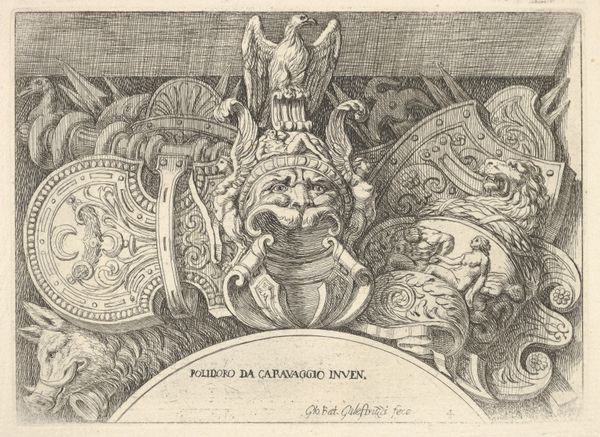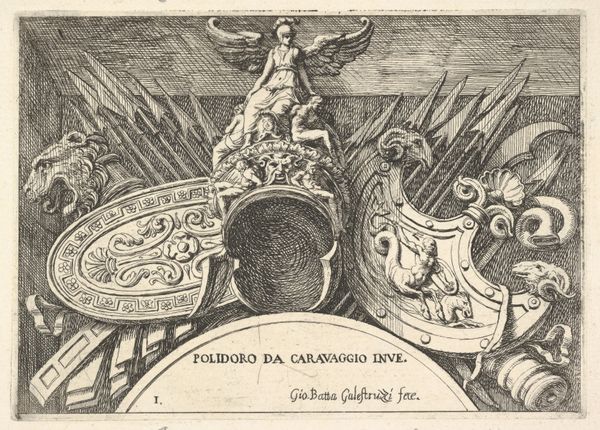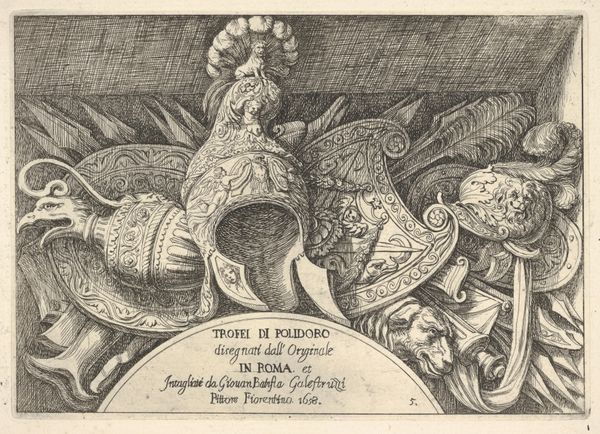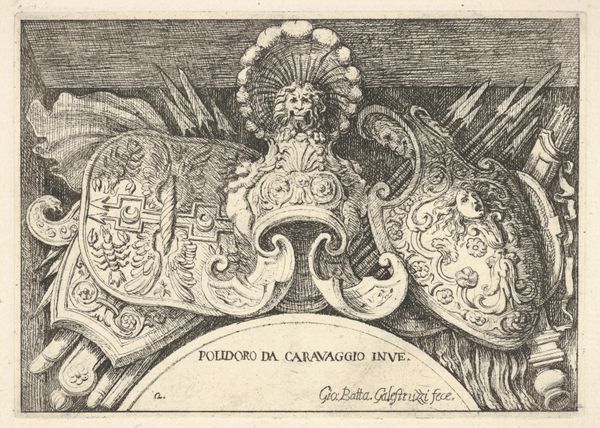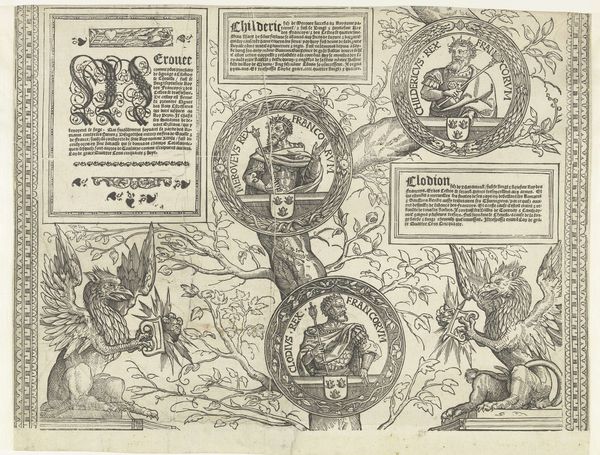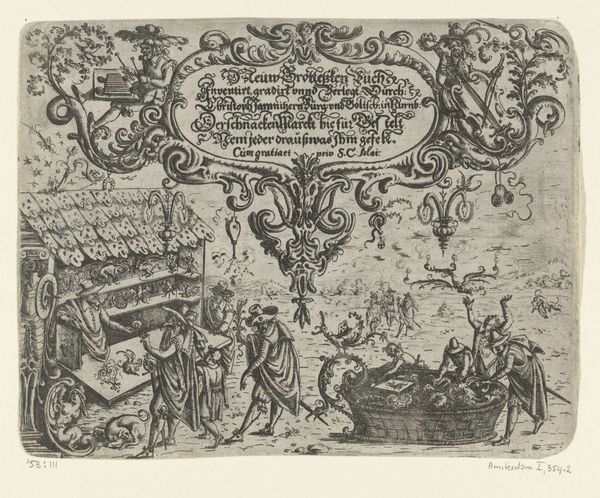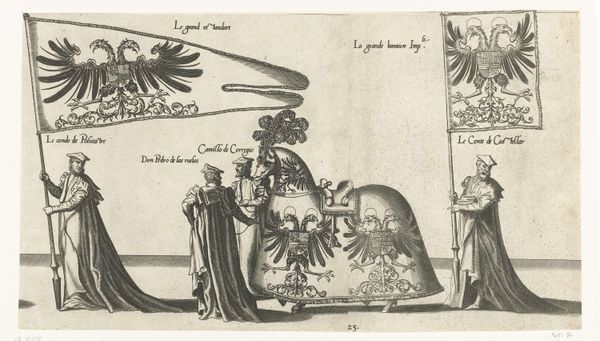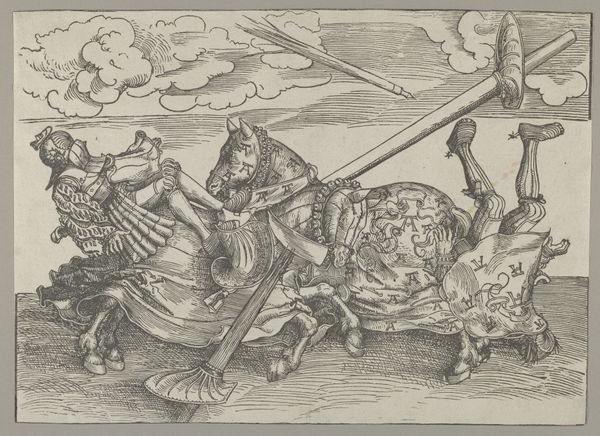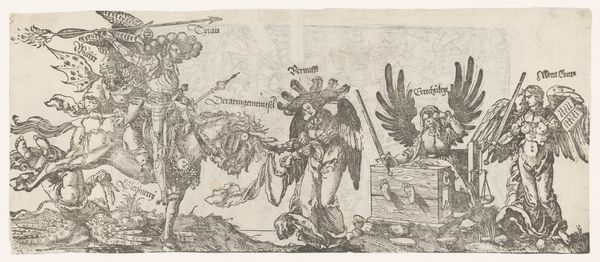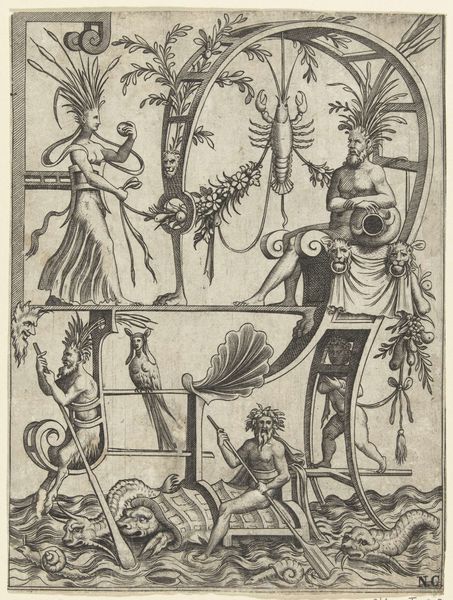
Plate 3: trophies of Roman arms from decorations above the windows on the second floor of the Palazzo Milesi in Rome 1656
0:00
0:00
drawing, print, metal, engraving
#
drawing
#
baroque
#
pen drawing
# print
#
metal
#
history-painting
#
engraving
Dimensions: sheet: 7 1/4 x 9 11/16 in. (18.4 x 24.6 cm) plate: 4 7/16 x 6 1/4 in. (11.3 x 15.8 cm)
Copyright: Public Domain
Editor: This engraving by Giovanni Battista Galestruzzi, dating back to 1656, presents a detailed array of Roman arms. What strikes me is the sheer density of detail, especially considering its medium. What can you tell me about this piece? Curator: Well, let's think about the production of this image. It’s an engraving, right? That means someone, or likely several people, were involved in the process of cutting into a metal plate, inking it, and then pressing it onto paper. It's not just Galestruzzi we need to consider. What kind of labor might have gone into creating such ornate objects in the first place? Editor: That’s interesting. So you're saying the image points back to other layers of making - the craftspeople who originally produced these Roman arms and decorations in the Palazzo Milesi, as well as the engravers? Curator: Exactly. These aren't just representations; they are echoes of the physical labor embedded in the original artifacts. What can that tell us about the Roman fascination with weaponry as status? What kind of work went into equipping an empire? How did craft intersect with power? Editor: It definitely makes me consider the social implications embedded within what seems, at first glance, simply decorative. The process of creating this kind of arms seems very laborious. Curator: And consuming these arms or images of arms? Also something available for the elite? Considering how baroque art blended different styles, we have here classical references mixed with complex ornamentation, showing the power structures operating then. Think about the metal used, the labor that involved obtaining the source. Everything is loaded with meanings about production. What have you learned today? Editor: How seemingly simple decorative art pieces can hold so much weight when you begin to think about labor and material! Curator: Right! Hopefully, this shifts your perspective a little, next time, on how to see art, not only for its aesthetics but also for its production.
Comments
No comments
Be the first to comment and join the conversation on the ultimate creative platform.
